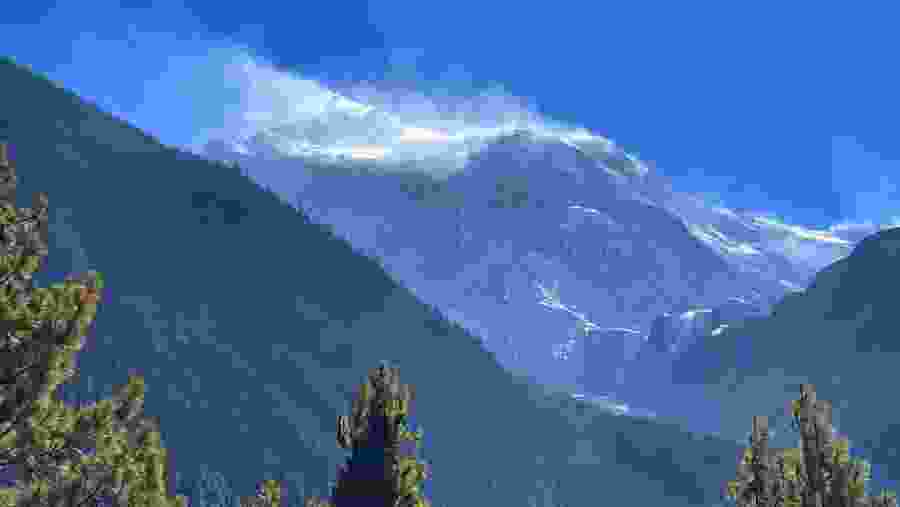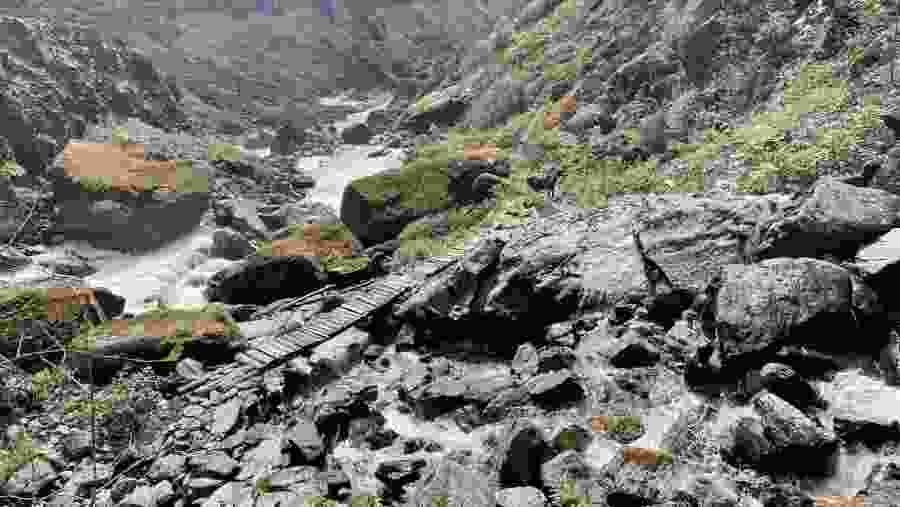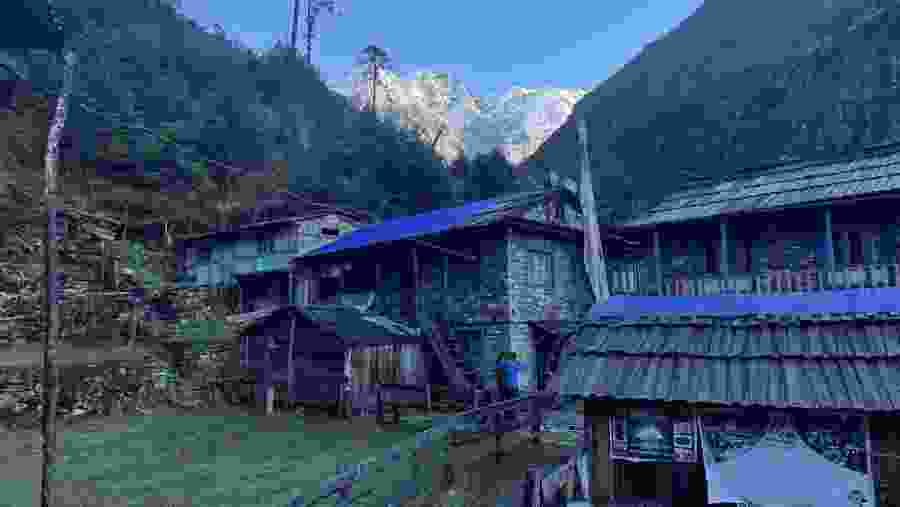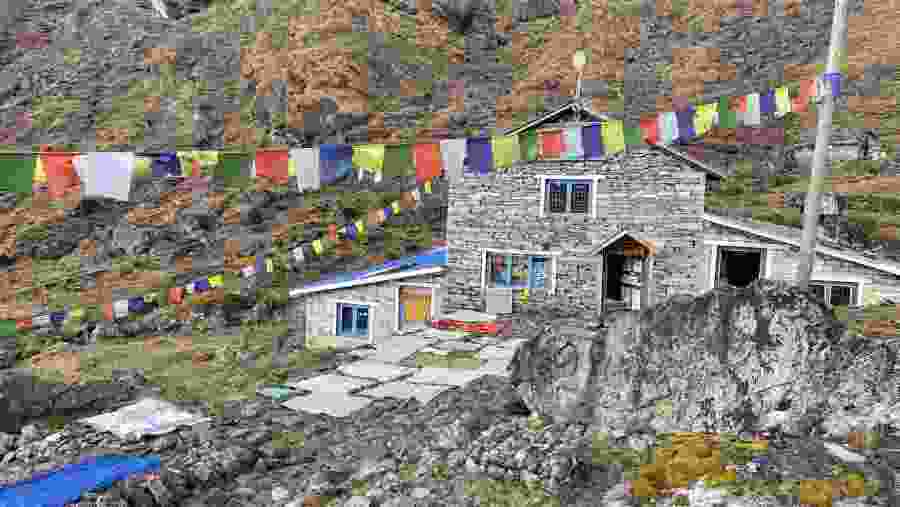14-Day Trek of Annapurna Circuit From Kathmandu
Highlights
Annapurna, Kathmandu, Bhaktapur, Pokhara, Besisahar
Locations Covered
Annapurna, Kathmandu, Bhaktapur, Pokhara, Besisahar
trekking, cultural, camping
Group Tour
14 Days
Easy
English
Description
Sign up for this fascinating 14-day trek of Annapurna Circuit from Besisahar. The trail leads you through dense deciduous and coniferous forests filled with wild fauna and traditional mountain villages, where you can see residents' lifestyles, habits and cultures. The trek from Chame to Pisang gives you a unique journey through the majestic Himalayas, with stunning landscapes. Magnificent forests reign around, and the Marsyandi River thunders under your feet, cutting through the main Himalayan ridge between Annapurna II and Manaslu.
Itinerary
-
Day 1: Arrival in Kathmandu
- Arrival in Kathmandu.
- Transfer to the hotel.
- Overnight stay at the hotel.
-
Day 2: Kathmandu to Dharapani (1995m)
- Now, you can drive further than the traditional Besisahar, so the track has become a day shorter. The heights are still insignificant, and it makes no sense to walk along the road for acclimatization.
- However, we will stop at all the places where you want to take a photo because the first day, one way or another, is always full of emotions!
- Overnight in the loggia.
-
Day 3: Dharapani to Chame (2710 m)
- Starting from Dharapani, one of the most beautiful places in Manang district; you follow a path leading through dense deciduous and coniferous forests filled with wild fauna. No wonder if you meet a herd of mountain goats crossing your path. The trekking route passes through traditional mountain villages, where you can see residents' lifestyles, habits and cultures. Throughout, you enjoy spectacular views of snowy peaks and stormy rivers that wind like a serpentine among the mountains.
- As we approach Chame, the air becomes more relaxed and fresher. Chame is a small but picturesque village with a rich culture and history.
- Here, you can see old monasteries, temples, and traditional houses. In Chame, you will find cosy loggias to relax after a day full of adventures and new experiences overnight in the loggia.
-
Day 4: Chame to Pisang (3,300 m)
- The track from Chame to Pisang is a unique journey through the majestic Himalayas, with stunning landscapes and rare views of the Annapurna massif and beyond, even for this region. The trail leads you across the bridge to the north side of the river, where there is a fruit-growing apple farm in Brachtanga.
- Here, you can see a unique bridge with a door in the middle, which, according to rumors, was used to prevent the invasion of robbers from the north into the lower valley of Marsiandi.
- Soon after, an impressive ascent to Pisang begins. The road makes a sharp turn, and the landscape changes. Magnificent forests reign around, and the Marsyandi River thunders under your feet, cutting through the main Himalayan ridge between Annapurna II and Manaslu.
- Upon arrival in Pisang, you can enjoy the peace and tranquillity that complements the mountain landscape overnight in the loggia.
-
Day 5: Pisang to Manang (3500m)
- The journey from Pisang to Manang is a fantastic walk through the majestic Himalayas. Perhaps this is the most beautiful day of the entire Annapurna Ring. Starting from Pisang, you enjoy spectacular views of Annapurna-2 and Pisang Peak. This place is known for its ancient monasteries and beautiful orange orchards. In Ghirindra, you cross the bridge over the Marsyandi River, and a breathtaking landscape of snowy mountain peaks opens up. This is a beautiful place to contemplate the highest peaks of the region. The road continues through a stunning mountain landscape, forest trails, and fields leading to Gungang.
- Here, you can see the traditional houses characteristic of this area, the alpine fields, and sheep pastures. Approaching Manang, you pass through pine and birch forests, with ever-changing views of Annapurna and Gangapurna. Manang is one of the largest settlements in the region, overnight in the loggia.
-
Day 6: Acclimatization in Manang
- A day of rest for acclimatization. Manang is one of the largest settlements in the Annapurna region, and there are many attractions to visit. Gangapurna Lake is a vital area attraction just a few kilometers from Manang. The water in the lake is always turquoise. Manang Gompa Monastery is one of the oldest in the region and dates back to the 1300s. Its territory offers a magnificent view of the valley and the surrounding mountains. Local Market: Manang has a small market for local goods and souvenirs.
- You can also try local cuisine in one of the many restaurants and cafes. The "Monastery of a Hundred Hands" contains numerous prayer wheels and mandalas used for meditation. Natural Museum and Center for the Study of Culture: Manang also has a nature museum and a cultural center where you can learn more about the local flora, fauna and culture overnight in the loggia.
-
Day 7: Manang to Tilicho Base Camp (4200 m)
- First, you must walk from Manang (3,540 m) to Khansar (3,710 m), which will take about 2 hours. The path leads through meadows and small villages surrounded by high mountains.
- After Khansar, you will continue climbing along the river to a vast plateau where the village of Sri Kharka (4,000 m) is located. Walking from Sri Khark to Tilicho Base Camp (4,150 m) will take another 2-3 hours. The route leads through alpine meadows, and along the way, you can enjoy magnificent views of the Annapurna Mountains and other nearby peaks. Depending on the time of year, this section of the track can be icy and windy. There are several places in Tilicho Base Camp where you can spend the night, but conditions can be pretty primitive since this is a remote and not very visited place.
- Overnight in the loggia.
-
Day 8: Ascent to Lake Tilicho (4920m) & Descent to Kangsar
- Ascent to Lake Tilicho (4920m), descent to Kangsar. The ascent to Lake Tilicho is one of the most memorable parts of the Annapurna trip. The Tilicho base camp to the Tilicho Lake (4,920 m) usually takes about 3-4 hours, depending on weather conditions and individual pace. You must be careful here — stones often fly, sometimes very large! The path begins with a slow ascent along rocky slopes with numerous turns and intersections. The views that open up as you climb are breathtaking — from the majestic mountain peaks to the bright blue Lake Tilicho below. For those who find it difficult, the locals happily provide horses. Lake Tilicho, one of the highest lakes in the world, is surrounded by majestic mountains, including Tilicho (7134 m) and Annapurna (8091 m), overnight in the loggia.
-
Day 9: Kangsar to Yak Kharka (4150)
- The walk from Kangsar Village to Yak Hark is another fascinating part of the Annapurna Ring. The total climb is about 400 meters and usually takes 4 to 6 hours, depending on your pace.
- As you climb, the vegetation becomes more and more sparse, and you begin to see more mountain meadows and meet herds of incredibly fluffy yaks and large alpine animals, because of which the place is named Yak Harka, overnight in the loggia.
-
Day 10: Yak Harka to Torong Phedi (4600 m)
- The landscapes become more unique and unforgettable as you move up the height. The trail gradually rises to a high-altitude desert with rocky slopes and piles of prayer stones.
- Along the way, you can see a lot of colorful prayer flags fluttering in the wind, creating an atmosphere of peace and tranquillity. Torong Phedi is a cold, secluded place surrounded by six thousand people.
- However, we prefer to use accommodation here because the upper camp of Torung La is very uncomfortable.
- Overnight in the loggia.
-
Day 11: Torong Phedi in Torong La (5416 m) to Muktinath (3,800 m)
- The passage from Torong Phedi through the Torong La Pass (5416 m) to Muktinat is perhaps the most difficult and, at the same time, the most exciting part of the Annapurna Ring. You start the day very early, usually before dawn. The first part of the climb leads up steep slopes, past stone huts where tea and simple food are sold, and up through snow fields, where cats are not excessive. When you reach the Torong La Pass, you will be rewarded for your efforts with spectacular panoramic views of the snowy mountains of the Himalayas from both sides.
- Here, you can see a lot of prayer flags, as well as a stone with an inscription confirming the height of the pass. The descent to Muktinath can also be tricky, as it is pretty steep and tedious after a long climb.
- However, you descend into warmer and greener areas, and as you approach Muktinath, the landscape becomes more picturesque overnight in the loggia.
-
Day 12: Muktinath to Pokhara
- Muktinath to Pokhara. It was moving by jeeps. Muktinat is a sacred place for both Hindus and Buddhists, and it is famous for its ancient temples and sacred springs. Before starting the journey, it is worth taking the time to visit these historical places. The transfer starts from the mountain road, where you can enjoy panoramic views of the Kali Gandaki Valley, the deepest in the world.
- You can see stunning views of the snowy peaks of the Himalayas, including Dhaulagiri (8167m) and Annapurna (8091m). If there is time, it is worth stopping in Tatopani to enjoy the natural hot springs; they will help you relax.
- Finally, you arrive in Pokhara, the "Gateway to Tibet," Nepal's second-largest city, known for its enchanting Fewa Lake, many activities and incredible culture.
- In Pokhara, you can stroll along the picturesque lake promenade, enjoy local cuisine, explore local markets, or relax after your mountain adventure. Overnight at the hotel.
-
Day 13: Pokhara to Kathmandu
- Pokhara to Kathmandu flight. There will be about half a day to explore the surroundings. We highly recommend Bhaktapur. Bhaktapur is one of the three royal cities of Nepal and is considered the country's cultural capital. Located 13 km from Kathmandu, it is an essential center of arts and crafts, known for its ancient architecture and traditional crafts. The city was founded in the XII century by King Aninda Malla and was the capital of the Kingdom of Bhaktapur until the XV century. Its historical center is a UNESCO World Heritage Site, with unique buildings and monuments, many of which are built in the traditional style of Nepali architecture called "Newar." Bhaktapur is famous for its pottery workshops, where you can see how local artisans work with clay, turning it into beautiful vases, pots and figurines.
- Overnight at the hotel.
-
Day 14: Departure
- Board the departure flight to your onward destination.
What's Included
What's Excluded
What To Bring
Meeting Point
Cancellation Policy
-
For cancellations upto 2 days before the tour -
Refund of 80% of the tour price.
Price
| Adult | |
|---|---|
| 1 to 20 | /person |
| Child | |
| 1 to 20 | /person |
|
This is a group tour |
|





